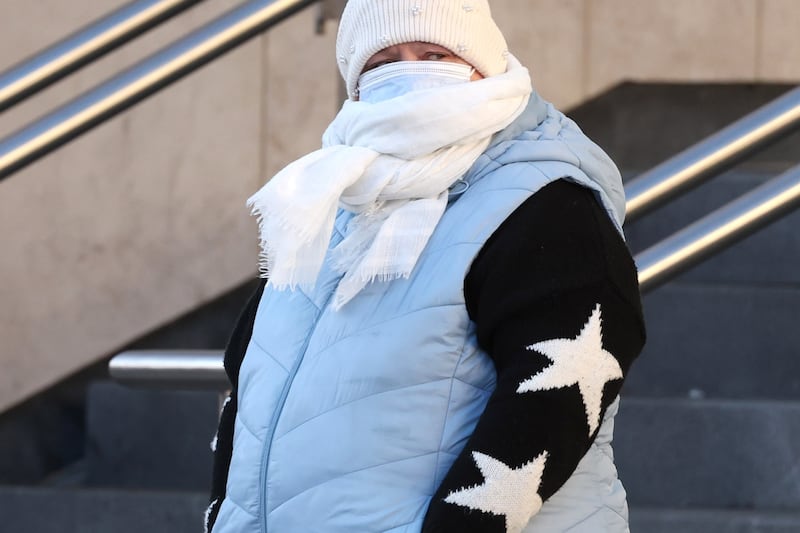When the weather takes a significant turn with wetter days and colder temperatures, we tend to blame this shift in conditions for the creeping pains in our knees and wrists. We can almost feel the chill settling in our bones.
Or so we believe.
In truth, despite our neighbours, grandmothers and long-lost relatives all claiming the same phenomena lamenting dropping temperatures and rising pain levels, the weather has little effect on the ailments that bother us.
“Patients with musculoskeletal issues often feel that the cold weather affects their symptoms,” says Dr Ahmeda Ali. “However, studies show cold weather changes generally do not increase knee, hip, or lower back pain risk. High temperatures and low humidity, though, can double the risk of gout flares.”
READ MORE
Why then do we blame the weather at all, and what does the science say?
Do colder temperatures make our joints ache? A study in 2014 found that 67.2 per cent of people with osteoarthritis felt the weather affected their level of pain. The self-perceived and observational nature of this study meant the participants were classified as weather-sensitive, or not, based on their perceptions of pain. As such, “most of the weather-sensitive people with osteoarthritis reported damp/rainy and/or cold weather as affecting their pain. Hot weather conditions were less frequently reported as influencing pain”.
The same study found that “women and more anxious people” were more likely to consider themselves “weather-sensitive”. And so, a decade ago, the science appeared to back up the sentiment that a cold day would likely affect the joints. However, the exact reason as to why cold weather increased pain was not determined and researchers are still in the dark about this.
Even so, the weather continually gets the blame.
[ Orla Tinsley: ‘I’m not a doctor, but ...’ the man beganOpens in new window ]
“People tend to blame cold weather for joint pain because lower temperatures can make joints feel stiffer and more sensitive,” says Dr Ali. “Additionally, when it’s cold, individuals may move less, leading to increased stiffness and discomfort. These factors create a perception that cold weather exacerbates joint pain, even though scientific studies show mixed evidence regarding this connection.”
One such study published in Seminars in Arthritis and Rheumatism has recently contributed to the body of research already published that challenges the myth that weather influences musculoskeletal pain or symptoms. Reviewers conducted a meta-analysis of case-crossover studies evaluating the risk of musculoskeletal health events associated with weather parameters with the primary outcome culminating in pain. The analyses showed “no association between relative humidity, air pressure, temperature, or precipitation and the risk of rheumatoid arthritis, knee pain or low back pain”, which thwarts the belief that a wet or cold day creates or worsens a problem.
[ Epilepsy: ‘It’s like having the sword of Damocles above your head’Opens in new window ]
Additional factors are always at play, and when it comes to cold and joint pain, there are other reasons the weather may influence a person’s pain level outside of the physical element of cold temperatures. A chill in the air or adverse weather conditions are often a good excuse to curl up by the fire, stay indoors and forgo exercise. Knowing that exercise can reduce pain, perhaps the resistance to physical activity on a wet and miserable day, and the changes in mood with poor weather are stronger factors to be considered when connecting increased pain levels with the weather report. It’s also worth considering the power of the mind. If we tell ourselves that we will experience joint pain when the weather turns cool, what is the likelihood that it will come true?
This is referred to as the nocebo effect, when adverse events are produced by a person’s negative expectations.
Knowing that increased joint pain may not have a direct correlation with the cold, what can we do about winter pain? Dr Ali offers some guidance on how to cope with increased pain levels for the things we can control, unlike the weather.
- Stay active: Exercise may be the last thing on anyone’s mind when the cold creeps in and the pain rises. However, to keep joints supple and active, exercise is vital, so try not to stay sitting in the one place for too long. “Engage in low-impact exercises, such as walking or swimming, to keep joints flexible and strengthen surrounding muscles,” says Dr Ali. “Gentle stretching can also help reduce stiffness.”
- Warm up: If you find joint pain flares when it’s cold, counter the chill by staying warm. “Before heading outdoors, warm up your joints with gentle movements or stretching. Dressing in layers can also help maintain body heat.”
- Apply heat: The cold can cause blood vessels to tighten up or constrict. This is your body attempting to keep you warm. The counterpoint of this action is that it may restrict blood flow to your extremities, leading to stiffness and pain. “Use heating pads or warm baths to soothe sore joints,” suggests Dr Ali. “Heat can help relax muscles and improve blood flow.”
- Stay hydrated: “Drink plenty of fluids, as staying hydrated is important for joint health. Dehydration can contribute to stiffness.” Studies suggest that dehydration can lead to the perception of joint pain.
- Maintain a healthy weight: “Excess weight puts added stress on weight-bearing joints,” says Dr Ali. “A balanced diet and regular exercise can help manage weight effectively.”
- Consider supplements: “Talk to a healthcare provider about supplements like glucosamine and chondroitin, which some studies suggest may help joint health.”
- Manage pain: “Over-the-counter pain relievers like nonsteroidal anti-inflammatory drugs can help relieve joint pain, but consult a healthcare provider for long-term use,” advises Dr Ali.
- Seek professional help: Finally, the doctor suggests that if joint pain persists, consider consulting a healthcare professional or physiotherapist for personalised treatment options that are not weather dependent.



















